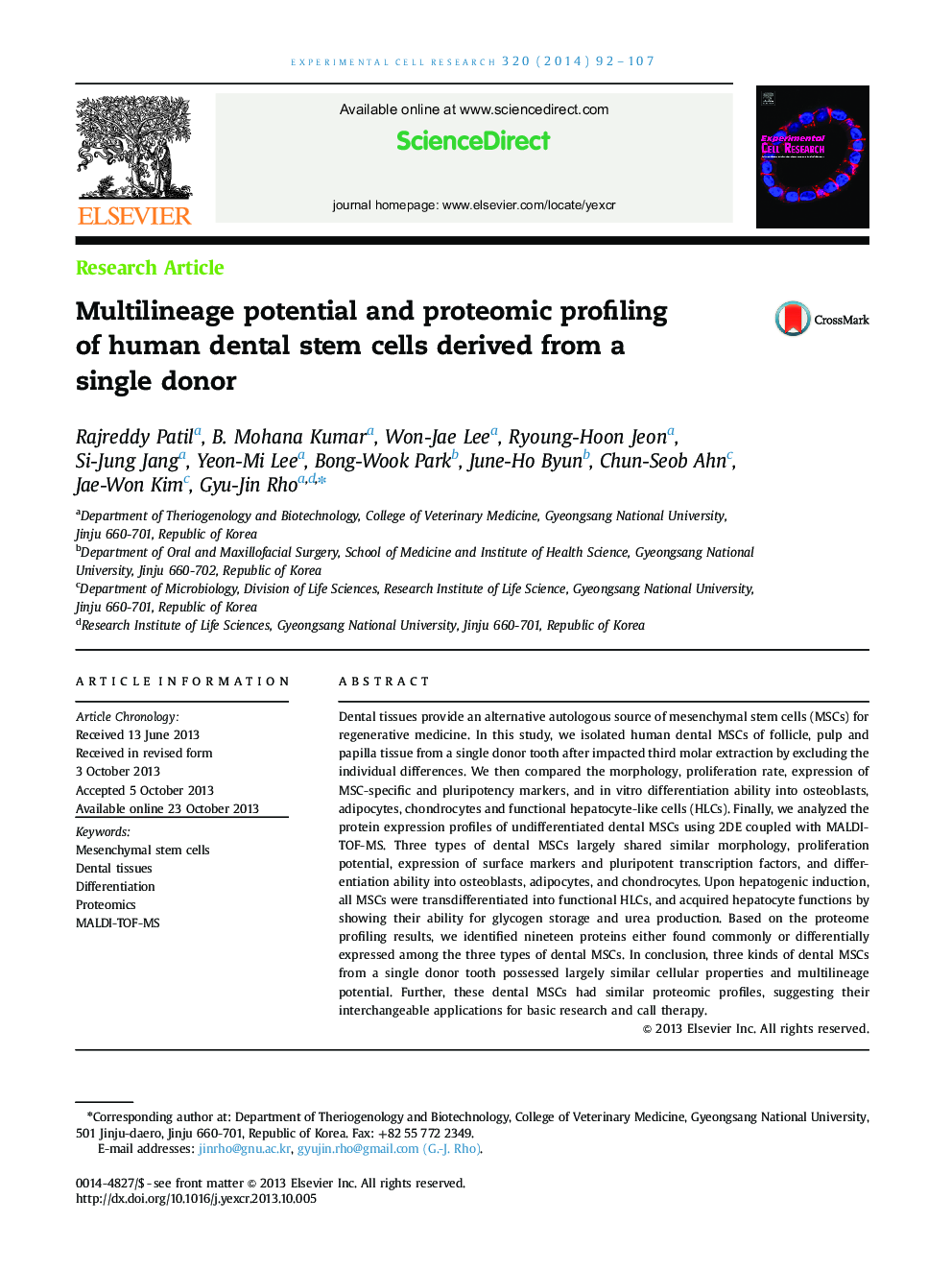| Article ID | Journal | Published Year | Pages | File Type |
|---|---|---|---|---|
| 10904201 | Experimental Cell Research | 2014 | 16 Pages |
Abstract
Dental tissues provide an alternative autologous source of mesenchymal stem cells (MSCs) for regenerative medicine. In this study, we isolated human dental MSCs of follicle, pulp and papilla tissue from a single donor tooth after impacted third molar extraction by excluding the individual differences. We then compared the morphology, proliferation rate, expression of MSC-specific and pluripotency markers, and in vitro differentiation ability into osteoblasts, adipocytes, chondrocytes and functional hepatocyte-like cells (HLCs). Finally, we analyzed the protein expression profiles of undifferentiated dental MSCs using 2DE coupled with MALDI-TOF-MS. Three types of dental MSCs largely shared similar morphology, proliferation potential, expression of surface markers and pluripotent transcription factors, and differentiation ability into osteoblasts, adipocytes, and chondrocytes. Upon hepatogenic induction, all MSCs were transdifferentiated into functional HLCs, and acquired hepatocyte functions by showing their ability for glycogen storage and urea production. Based on the proteome profiling results, we identified nineteen proteins either found commonly or differentially expressed among the three types of dental MSCs. In conclusion, three kinds of dental MSCs from a single donor tooth possessed largely similar cellular properties and multilineage potential. Further, these dental MSCs had similar proteomic profiles, suggesting their interchangeable applications for basic research and call therapy.
Related Topics
Life Sciences
Biochemistry, Genetics and Molecular Biology
Cancer Research
Authors
Rajreddy Patil, B. Mohana Kumar, Won-Jae Lee, Ryoung-Hoon Jeon, Si-Jung Jang, Yeon-Mi Lee, Bong-Wook Park, June-Ho Byun, Chun-Seob Ahn, Jae-Won Kim, Gyu-Jin Rho,
